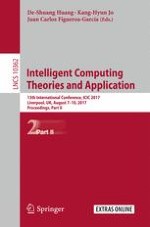2017 | OriginalPaper | Buchkapitel
Protein Hot Regions Feature Research Based on Evolutionary Conservation
verfasst von : Jing Hu, Xiaoli Lin, Xiaolong Zhang
Erschienen in: Intelligent Computing Theories and Application
Aktivieren Sie unsere intelligente Suche, um passende Fachinhalte oder Patente zu finden.
Wählen Sie Textabschnitte aus um mit Künstlicher Intelligenz passenden Patente zu finden. powered by
Markieren Sie Textabschnitte, um KI-gestützt weitere passende Inhalte zu finden. powered by
